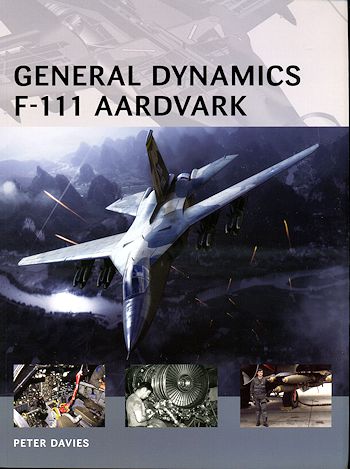 In the
late 1950s, the USAF was looking for a replacement for the F-105 Thunderchief. A
request was put out to several manufacturers for possible designs. In the
meantime, the Navy was looking for a replacement for the F-4 Phantom II.
Developing new aircraft was becoming more and more time consuming so one had to
look many years ahead. This all came at the time when Robert McNamara was the
Secretary of Defense. McNamara came from industry and felt that one plane should
be able to meet multiple requirements.
In the
late 1950s, the USAF was looking for a replacement for the F-105 Thunderchief. A
request was put out to several manufacturers for possible designs. In the
meantime, the Navy was looking for a replacement for the F-4 Phantom II.
Developing new aircraft was becoming more and more time consuming so one had to
look many years ahead. This all came at the time when Robert McNamara was the
Secretary of Defense. McNamara came from industry and felt that one plane should
be able to meet multiple requirements.
Backing up a bit, the USAF looked over the proposals and chose both
General Dynamics and Boeing to provide more information on their aircraft. After
the usual comparisons, the USAF decided on the Boeing entry. But wait, we have
to add in politics and the end result is that the General Dynamics entry was
chosen.
The F-111 was a huge aircraft weighing over 75,000 pounds. It was
designed to be a low level attack aircraft and not a dog-fighter. It would be
using new engines, a new variable wing design, and a new escape capsule instead
of bang seats. The Navy wanted a fleet interceptor to carry its Phoenix missile
system, which was also under development. But they did not want the behemoth
that was being forced on them. To shorten the story, the F-111B ended up being
far too large a plane, but was able to develop the Phoenix weapons system. In
the end, Grumman, which was building the swing wing box for the F-111, was able
to take that technology and provide the fleet defender the Navy wanted in the
form of the F-14 Tomcat.
Back with the Air Force, the F-111 had a number of teething problems,
one of which was a problem with engine stalling as speed and angle of attack
increased. It resulted in a lot of work on intake work to allow high speed air
to flow smoothly into the engines. The TF-30 engines were the first afterburning
turbofans and required a lot of air. Much of the issue with the intakes were due
to the shortness of them, but as mentioned, the intakes were redesigned to allow
smoother air flow.
In 1967, several aircraft were sent to Vietnam to see how they performed
in combat. Of the initial six sent into combat, three were lost, two for reasons
unknown. Eventually, the bugs were worked out and the F-111 became a reliable
airframe. It was developed into several different types including the FB-111A
nuclear bomber, the EF-111A jamming platform and the undeveloped RF-111. The
only nation to order the F-111 was Australia with their F-111C. These planes had
the longer wings of the F-111B and the FB-111A. Later, FB-111As were reworked as
F-111Gs and once they were removed from service, several were sent to Australia.
Many called the F-111 the Aardvark due to its long nose, but that name was not
made official by the USAF until the day the type was taken out of service.
This book is a super look at one of the more interesting and ground
breaking aircraft of the early 1960s. A book that covers all the different
variants and is chock full of superb photos, artwork and drawings. I book I know
you will enjoy reading.
November 2013
For more on the complete line of Osprey books,
visit www.ospreypublishing.com. In the US, it is
Osprey Direct at 44-02 23rd St, Suite 219, Long Island City, NY 11101., where you can
get a catalogue of available books.
If you would like your product reviewed fairly and
fairly quickly, please
contact
the editor or see other details in the
Note to
Contributors.
 In the
late 1950s, the USAF was looking for a replacement for the F-105 Thunderchief. A
request was put out to several manufacturers for possible designs. In the
meantime, the Navy was looking for a replacement for the F-4 Phantom II.
Developing new aircraft was becoming more and more time consuming so one had to
look many years ahead. This all came at the time when Robert McNamara was the
Secretary of Defense. McNamara came from industry and felt that one plane should
be able to meet multiple requirements.
In the
late 1950s, the USAF was looking for a replacement for the F-105 Thunderchief. A
request was put out to several manufacturers for possible designs. In the
meantime, the Navy was looking for a replacement for the F-4 Phantom II.
Developing new aircraft was becoming more and more time consuming so one had to
look many years ahead. This all came at the time when Robert McNamara was the
Secretary of Defense. McNamara came from industry and felt that one plane should
be able to meet multiple requirements.